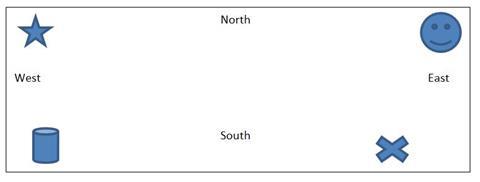In this article, IELTS teacher Iffaf Khan offers practical tips and strategies to help teachers inject energy into IELTS preparation classes.
Because of the nature of the IELTS exam, exam preparation classes are often intense, take up large portions of study time and involve lots of sitting down. When students sit for too long in one position, they get tired, lose concentration and stop paying attention. This is particularly a problem if they are on short courses. There is a lot they need to know about the exam and they cannot afford to waste time.
To counter this in long classes, you could make some small changes to the seating arrangements – whether you have a big or small classroom – to energise the students with activities which practise different skills or overcome potential problems in the exam.
Tip 1: Face to face
Problem: Students get very nervous on the day of the test, especially when they are sitting in front of the examiner. When they are nervous they find it difficult to think or express themselves clearly.
Solution: Give the students a chance to practice exam-like conditions for the speaking test with a partner. Get students to make eye contact with each other, get their body language right (think job interview) and practice section one. Section one of the exam is straightforward and starting it well will help them feel more confident.
Instructions:
- Divide the class into two groups. Make one group the candidates, and the other group the examiners. If you have an extra student, put them in the examiner group.
- Get the candidate group to prepare for the speaking test. They do this by discussing how they would answer some simple questions: Can you tell me your full name? What do you do? Where do you come from? Instruct them to consider the length of answer, their tone and body language.
- Give the examiner group the following questions from Speaking section one on a card. They practice asking the questions in a serious but friendly voice:
Can you tell me your full name?
Can I see your identification?
What do you do?
Where do you come from?
What do you enjoy doing?
What do you do in your free time?
- Put the chairs into two lines. The chairs must face each other.
- Ask the examiners to sit in one line. Tell them they must spend no more than two minutes with their candidate.
- Get them to invite a candidate to their chair, to ask them the questions on their card.
- Monitor the brief question and answer activity. Look out for one word answers or those that are too extensive, poor body language or a lazy tone. Stop the interview after two minutes and get the candidates to move to another chair. Remind your students to give the right kind of answer for section one (not too long or too short) and that the activity is an interview. For example, in response to What do you do? 'I’m a waitress' is too short but 'I’m waitress in an Italian restaurant in central London' is more appropriate.
- Candidates speak to a different examiner. You can change the seats a few times. Give each examiner a different set of questions from section one to stop candidates getting bored.
- Change the examiners into candidates, in order to give everyone a chance to be interviewed.
Tip 2: Fish bowl or triangle
Problem: You want to give detailed feedback to each student but very often it is hard to monitor everyone as you might have a very large or a very noisy class.
Solution: Get the students to give each other detailed feedback by moving the seats into triangles or a ‘fish bowl’ where one person is listening and not speaking. In both seating arrangements you have an observer, taking notes, who is giving feedback to the other two students. Students often feel uncomfortable doing all the talking themselves (as they largely do in the exam) and being judged but if they can learn to be more comfortable when being observed they can relax into it. An observer can also remind them to pay attention to their body language, to not tighten up or look nervous.
Instructions:
- Go to the official IELTS site and look at how the speaking test is evaluated.
- Discuss with your students what makes a good interview in the speaking test.
- Write their ideas on the board.
- Print off questions for speaking tests from onestopenglish.
- Divide the class into groups of three and allocate a candidate, examiner and observer.
- Move the chairs into a triangle.
- Make sure that the observer has their notebook and that they know what to listen and look for. They should take notes during the test.
- Ask the examiners to conduct the speaking test.
- Give the observers a chance to give the candidate feedback.
- Change the roles in each group twice, so that everyone has a chance to observe, ask and answer.
Tip 3: Back to back
Problem: In Writing Task 1, the candidate sees a diagram and writes a report that describes it. These include maps, processes, bar charts, line graphs or pie charts. To do this they must understand this diagram and assess it carefully. When these diagrams do not appear the same as the ones students have seen and practised, they can get nervous. Instead of focussing on the information, they may feel worried and freeze because it seems new.
Solution: Remind them to pay more attention to the information within the diagram rather than its appearance. They can do this through a listening exercise that focuses on and attunes them to information rather than appearance – by not actually looking at the diagram. This way they learn to always think and analyse before they do any writing.
Instructions:
- Arrange chairs so that all students are sitting with their backs to the board.
- Tell them that they are going to listen to you describe an image. Start with a simple diagram and draw it on the board, e.g.
- Describe it (e.g. In the north-west corner there is a star.) and ask students to write what they hear in their notebooks.
- Students then turn around and see if their diagram is the same as yours.
- Although there are no relationships between the objects, this ought to demonstrate to students that they can focus on information, whether it is familiar or not.
- Now set up a description of a proper diagram. Give each student a copy of an empty chart, such as a line graph or ask them to draw one in their notebook. It could look like this:
- Provide some information (invented or real) for each axis (e.g. the amount of potatoes sold per hundred thousand is on the y-axis and the years are on the x-axis). Read out the numbers for each axis (e.g. 100,000 at the bottom, working up to 1 million at the top of the Y axis, years starting with 1992 on the far left of the X axis), e.g.:
- Explain that they are now going to describe a diagram to their partner.
- Give them copies of different pie charts, maps, bar charts, line graphs or any diagram. Try and find a range of different ones.
- They describe their diagram to a partner, before swapping roles. Each student needs a different diagram to describe.
- Move the chairs so they are back-to-back.
- Now get them to listen to each other and draw what their partner describes.
- When they have finished, ask them to sit next to each other again in order to compare their diagrams and see if they match.
Tip 4: Ideas' hub
Problem: In Writing Task 2, candidates are often asked to write essays where they have to discuss problems and solutions. Although whole class discussions – lead by the teacher at the front of the class – are useful for this, it often means that not all students are engaged or participating. If they are tired, they can zone out.
Solution: Refresh and reset to get the ideas flowing. Get students away from their desks and change to group seating arrangements; any change to their body language creates new thoughts or inspiration.
Instructions
- Divide your students into groups of three or four.
- Move their chairs so that they are facing each other.
- Give each group the same topic – one that has already come up in class at some point if you want to save time. Start with something light-hearted; you could have topics like ‘make children healthier,’ ‘improve traffic flow,’ or ‘get people to spend less money.’ Some funnier topics, relating to conversations you’ve had in class could be ‘improve my handwriting’ or ‘come to class on time.’ It doesn’t always have to be serious.
- Appoint one student as the note-taker and set a time limit of 5–10 minutes.
- Tell the students to think of solutions to the problem mentioned in each topic (how to make children healthier or how to improve traffic flow, for example)
- Ask the students to come up with as many ideas as they can in that given time. Get the different groups to tell you how many ideas they had and to compare them.
- Change the ideas’ hub each day by giving a new topic
- Try to keep it fresh by changing the students in each group so that they are not always sitting with the same people every day.
Related resources
You’ll find more information about the speaking test on the IELTS website: https://www.ielts.org/about-the-test/test-format-in-detail
IELTS practical tips

Practical tips for teachers to help students overcome common problems in the IELTS exam.
- 1
- 2
- 3
- Currently reading
IELTS practical tips: Injecting energy into an IELTS preparation class
- 5
- 6
- 7














No comments yet